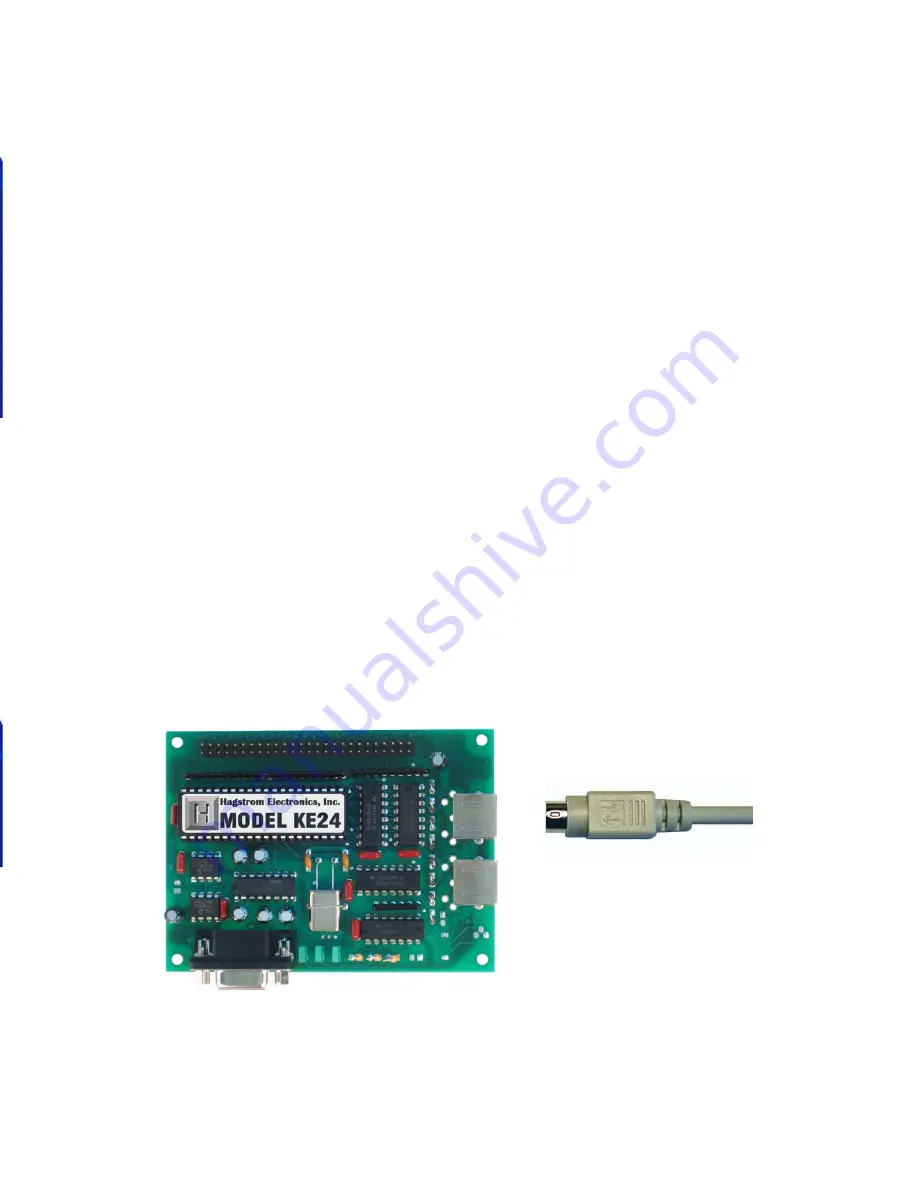
Serial Data to PC Keyboard Input
When serial information is received on the KE24 RS-232 port, it
may be translated in one of two user selectable manners.
One method allows for receiving ASCII characters on the serial
port. Characters are translated into PC keyboard signals and sent
directly to the computer. Although this method provides a simple
interface, it does not allow for full keyboard functions, or multiple
keystroke commands such as Ctr/Alt, etc.
The second method receives codes from 1 to 127, which each
correspond to a key on the PC keyboard. The KE24 translates these
codes into PC keyboard signals. In addition, each code sent has
a “make” and a “break” value for the key. Reception of a “make”
code on the serial port produces a signal into the computer that
is the equivalent of pressing that key on a keyboard and holding
it down (without repeat). In order to simulate the release of that
key, you must send a “break” code for the same key. Several
“make” codes can be transmitted before their corresponding
“break” codes, which allows for emulation of key sequences such
as Shift+F1, Ctrl+L, etc.
8
Connecting the KE24 to a PC
“Make” and “Break” codes respectively, this may be changed by
selecting the desired setting in the lower left corner of the keyboard
representation.
You do not need to send a response for both MAKE and BREAK
sections. For example, if you want the KE24 to send an “A” keystroke
to the computer when your input is released, program a “Make”
code for that key in the first section under the BREAK area, and the
“Break code for the key in the second BREAK section.
To create a delay between steps in
a macro, click on an unused step in
the macro dialog, then click DELAY at
the bottom of
the keyboard
representation. Enter the desired delay
time in the window that appears. Delay
times may be set in 10 msec increments
from 10 to 2550 msec.
23










































